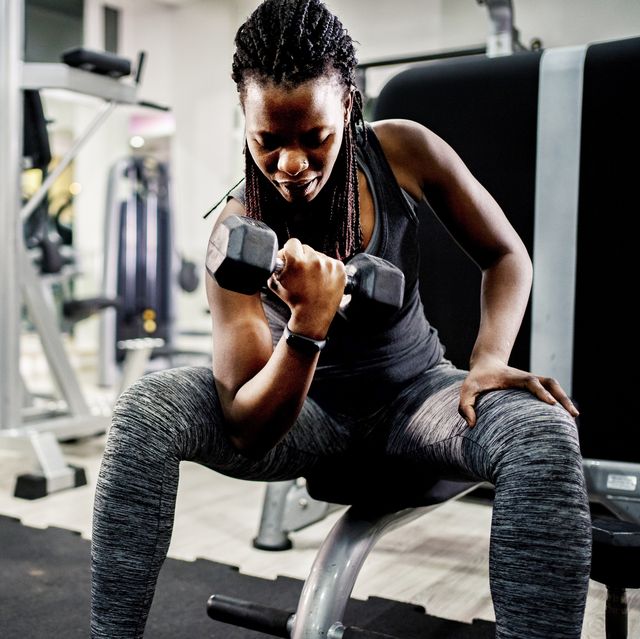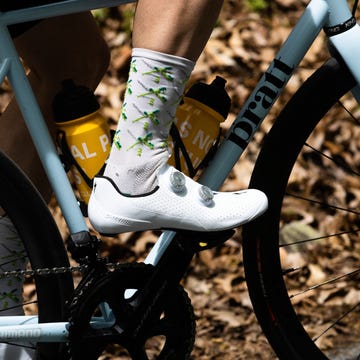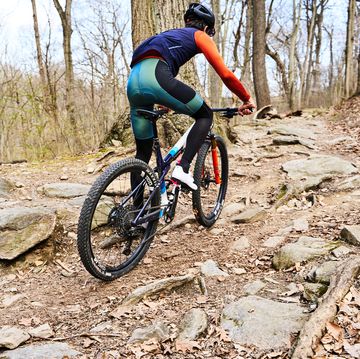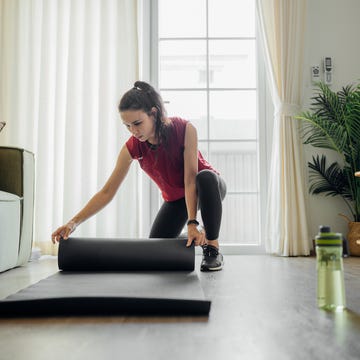- Research suggests that strengthening one arm or leg can lead to improvements in strength in the limb on the other side of the body, even if that side remains stationary.
- Performing eccentric exercises—those that focus on the lengthening or lowering phase of a movement—maximizes the benefits of this “cross-transfer” effect, as compared to concentric (or the upward/shortening) phase.
Maybe you’re nursing knee pain that just won’t go away, or a sprained elbow has you taking it easy for the next few weeks. Whatever might be causing you to keep one limb resting, it’s possible to minimize the usual muscle loss that comes with keeping your arms or legs sedentary, according to research in Medicine & Science in Sports & Exercise.
Researchers recruited 36 healthy, young men who were generally sedentary and measured their muscle mass and strength, then had them put their non-dominant arms into casts for three weeks. The participants were split into three groups: non-exercising, eccentric exercises only, and concentric exercises only.
In eccentric movement, the contracting muscle lengthens, as you do when you’re lowering a dumbbell in biceps curls or lowering down into a squat. Concentric is the other side of that, shortening the muscle, so it would be the action of raising the dumbbell up toward the shoulder in a curl or standing up from a squat.
When the casts were removed, those in the non-exercise control group had 15 percent loss of strength in the immobilized arm, while those in the other groups had significantly less of a reduction. The concentric group lost 4 percent muscle strength, but the eccentric group went in the other direction—they actually gained 4 percent in the immobilized arm, despite the fact that it was the other arm getting the workout.
Also, muscle size in the eccentric group remained the same, but decreased for the concentric group slightly, and much more for the non-exercisers.
The reason for why muscles in an immobilized limb might be preserved or even strengthened by working out the opposite limb is called “cross-transfer” or “cross-education,” according to the study’s co-author, Ken Nosaka, Ph.D., professor of exercise and sports science at Edith Cowan University in Australia.
“What we suspect is that the central nervous system is playing a large role in this effect,” he told Bicycling. “When there’s resistance on one side, that may activate neural circuits that affect the motor pathways to the opposite side. That can stimulate muscles even if they aren’t being actively used. That’s true for both arms and legs.”
He added that eccentric-only contractions seem to be especially good for firing up this process, in part because people tend to be able to add more resistance in those exercises. For example, it’s easier to lower a 20-pound dumbbell than to lift it.
One limitation of the current study is the modest number of participants, but this is mitigated by the fact that the research is verifying results found in several previous studies.
For example, a 2020 study—which Nosaka co-authored—published in Medicine & Science in Sports & Exercise also showed a profound cross-education effect from the trained to the non-trained limb, with a greater benefit from eccentric exercises.
In terms of the best approach for training, especially if you’re dealing with an injury, focusing on eccentric contractions and working on the opposite limb seems like a sensible strategy for maintaining muscle mass, said Carol Mack, D.P.T., C.S.C.S.
She told Bicycling that doesn’t mean ignoring the injured limb completely, because some movement can often be beneficial for healing.
“If your leg or arm is completely immobilized due to fracture or surgery, then of course you’ll want to follow instructions from your doctor or physical therapist about when you can move that limb again,” Mack said. “But if it’s sprained or sore, then some active movement could help, even if you’re doing more on the other side.”
The best approach is to talk to your physical therapist or doctor about what might work best for you, and try to incorporate some training rather than skipping it completely while you’re healing.
Elizabeth Millard is a freelance writer focusing on health, wellness, fitness, and food.

















